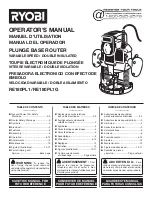
151
Chapter 17
•
ACS Username/Password:
Enter the username/password to log in to the ACS server.
•
Interface used by TR-069 client:
Select which interface to be used by the TR-069
client.
•
Display SOAP messages on serial console:
Enable or disable this function.
•
Connection Request Authentication:
Select this check box to enable authentication
for the connection request.
•
Username/Password:
Enter the username/password for the ACS server to log in to
the router.
•
Path:
Enter the path for the ACS server to log in to the router.
•
Port:
Enter the port that connects to the ACS server.
•
URL:
Enter the URL that connects to the ACS server.
•
Simple Traversal of UDP over NATs:
Select this check box to enable STUN for the
connection request and set the STUN maximum and minimum keep alive period,
server address and port.
Click
Save
to make the settings effective.
17 10 SNMP Settings
SNMP (Simple Network Management Protocol) is widely used in network management
for network monitoring. It allows management applications to retrieve status updates
and statistics from the SNMP agent within this device. In this way, network administrators
can easily search and modify the information on any node on the network. Meanwhile,
they can locate faults promptly and implement the fault diagnosis, capacity planning
and report generating.
The
SNMP Agent
is an application running on the router that performs the operational
role of receiving and processing SNMP messages, sending responses to the SNMP
manager, and sending traps when an event occurs. So a router contains SNMP “agent”
software can be monitored and/or controlled by SNMP Manager using SNMP messages.
1
Visit
http://tplinkwifi.net
or
http://192.168.0.1
, and log in with the password you set
for the router.
2
Go to
Advanced
>
System Tools
>
SNMP Settings
page.
















































